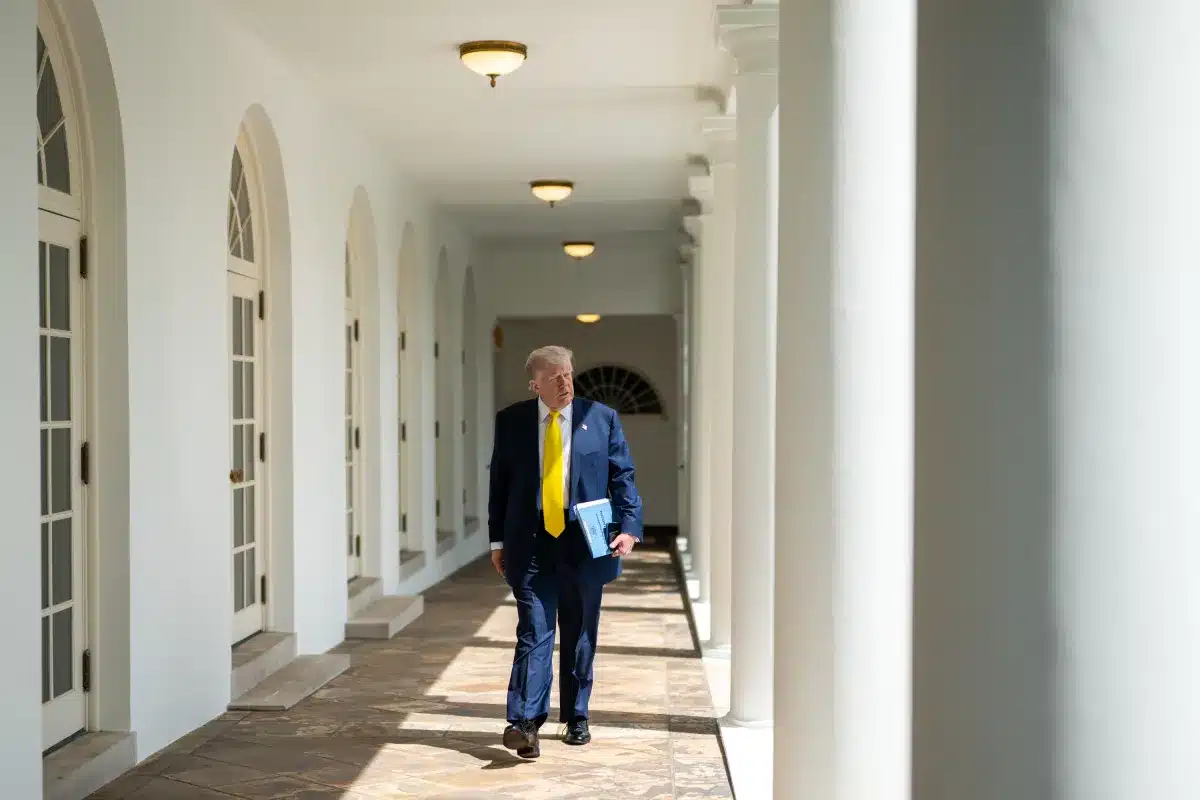Seoul and Washington strengthen their industrial alliance amid global competition for technological and energy leadership
On August 25, 2025, a new chapter in economic cooperation between South Korea and the United States was written. Both countries signed 11 memoranda of understanding (MOUs) covering strategic sectors such as shipbuilding, nuclear energy, aviation, liquefied natural gas (LNG), and critical minerals.
The announcement came during a business roundtable in Washington, held one day after the first summit between South Korean President Lee Jae Myung and U.S. President Donald Trump. The event gathered 16 South Korean business leaders, including Samsung Electronics President Lee Jae-yong, SK Group Chairman Chey Tae-won, and Hyundai Motor Group President Euisun Chung. On the U.S. side, 21 executives attended, among them Nvidia CEO Jensen Huang and Carlyle Group co-founder David Rubenstein, according to South Korea’s Ministry of Trade, Industry, and Energy.
Naval Construction: A Partnership to Strengthen the U.S. Navy
In the naval sector, HD Hyundai and the Korea Development Bank (KDB) signed an initial agreement with U.S. investment firm Cerberus Capital. The goal: develop a joint investment program to modernize shipbuilding and enhance cooperation with the U.S. Navy.
Additionally, Samsung Heavy Industries agreed with Vigor Marine Group to collaborate on maintenance, repair, and overhaul (MRO) projects for U.S. Navy vessels.
This move is significant: as China and other countries advance their naval capabilities, South Korea bolsters its position as a strategic partner in the U.S. maritime supply chain.
Nuclear Energy: Small Modular Reactors and an AI Campus in Texas
Nuclear energy was one of the core themes. Korea Hydro & Nuclear Power (KHNP) and Doosan Enerbility signed MOUs with X-energy and Amazon Web Services to jointly develop small modular reactors (SMRs), deemed crucial for a secure and clean energy transition.
Doosan Enerbility also completed an agreement with Fermi America to supply materials for a large nuclear plant and SMRs that will power an ambitious AI campus in Texas.
Simultaneously, KHNP and Samsung C&T Corp. signed a trilateral agreement with Fermi America to participate in this project.
Finally, KHNP agreed with U.S. provider Centrus to invest in building a uranium enrichment plant, enhancing nuclear supply security amid rising global demand.
Aviation: Korean Air’s Bold Move with Boeing and GE
In aviation, the agreement was notable. Korean Air announced the purchase of 103 next-generation aircraft from Boeing, valued at approximately $36.2 billion.
The airline also signed a $13.7 billion contract with GE Aerospace for engine procurement and maintenance, securing long-term technical and logistical support.
This deal reinforces the close ties between South Korea and the U.S. aerospace industry, at a time when the sector is recovering from the pandemic and facing new sustainability challenges.
LNG and Critical Minerals: Diversification and Strategic Security
In energy, Korea Gas Corp. signed a deal with Trafigura, one of the world’s largest energy traders, to purchase 3.3 million tons of U.S. LNG annually over 10 years starting in 2028.
This pact guarantees a stable energy source for South Korea, reducing reliance on less stable regions.
In critical minerals, Korea Zinc Inc. reached an agreement with Lockheed Martin to collaborate on the supply chain of essential aerospace and defense materials. As demand for lithium, nickel, cobalt, and rare earth elements grows, this partnership aims to secure access to vital resources for batteries, electronic systems, and advanced weaponry.
Political and Economic Context
These 11 MOUs are more than commercial deals; they embody both nations’ commitment to strengthen their strategic alliance in a competitive global landscape characterized by tensions with China and Russia, and a race in technology related to AI, energy, and defense.
South Korea’s Minister of Industry, Kim Jung-kwan, summarized this clearly:
“The Korean government will provide all necessary institutional support to open a new era of Korea-U.S. manufacturing cooperation. We will strive to create limitless business opportunities for companies from both nations.”
A Shared Vision: Innovation, Defense, and Sustainability
The agreements reflect a common pattern: pursuing resilience and technological autonomy. From nuclear reactors powering AI centers in Texas to diversifying critical mineral supply chains, the goal is clear: build a secure and sustainable infrastructure that enables South Korea and the U.S. to lead in strategic sectors.
The involvement of figures like Jensen Huang (Nvidia) underscores AI’s crucial role in this new cooperation framework. The convergence of energy infrastructure, supercomputing, and defense signifies a new paradigm in bilateral relations.
Frequently Asked Questions (FAQ)
1. Why are small modular reactors (SMRs) significant in this agreement?
SMRs enable safer, more flexible nuclear energy generation, occupying less space and offering reduced costs compared to traditional plants. They are seen as key solutions for powering everything from remote communities to data centers and AI projects.
2. How does the purchase of aircraft benefit South Korea?
It strengthens Korean Air’s fleet with next-gen aircraft and deepens U.S.-Korea aerospace ties, opening doors to technology transfer and collaboration in sustainable aviation.
3. What is the strategic importance of the LNG agreement for South Korea’s energy security?
Securing 3.3 million tons of LNG annually over a decade diversifies South Korea’s energy mix, mitigates geopolitical risks, and supports its shift toward greener energies.
4. Why is the critical minerals agreement with Lockheed Martin important?
The minerals—lithium, nickel, cobalt, rare earths—are vital for batteries, aircraft, satellites, and defense systems. This alliance aims to ensure stable access amid fierce global competition.
via: Yonhap News Agency

